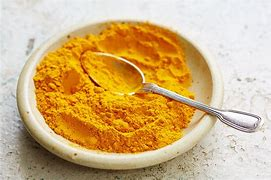Lead-Tainted Turmeric
October 5th, 2019“…….•
Turmeric adulteration with lead chromate was assessed in Bangladesh.
•
Turmeric Pb concentrations exceeded the national limit by up to 500 times.
•
Evidence of turmeric adulteration was found in 7 of 9 turmeric-producing districts.
•
Turmeric adulteration was found to be driven by consumer demand for yellow roots…..”
“……Turmeric is an essential culinary spice consumed daily in South Asia, also known as ‘the golden spice’ or ‘Indian saffron’ due to its brilliant yellow color (Prasad and Aggarwal, 2011). A relative of the ginger root, turmeric is grown predominantly in India, as well as Bangladesh, Myanmar, China, and Nigeria. For millennia, turmeric has been consumed medicinally as an anti-inflammatory agent and to promote general health in South Asia (Prasad and Aggarwal, 2011). Similarly, across other countries within the past five years, turmeric has been studied and consumed for its healing properties, targeting everything from gastric disorders to cancers (Gupta et al., 2013). Major manufacturers worldwide have also started using turmeric as a natural coloring agent in foods ranging from macaroni and cheese to yogurt and ice cream in response to consumer pressure to reduce the use of artificial coloring agents (Cowell et al., 2017)…….Thirteen brands of turmeric exported by Bangladesh and India have been recalled worldwide since 2011 due to excessive Pb concentrations (Cowell et al., 2017). A study in rural Munshiganj district of Bangladesh found that 78% of 309 children aged 20–40 months had elevated blood lead levels and that turmeric was the likely exposure route (Gleason et al., 2014). They reported average Pb concentrations of 80 μg/g in turmeric, more than 30 times higher than the national threshold for allowable Pb in turmeric in Bangladesh (Bangladesh Standards and, 2001). Recent population- and isotope-based studies suggest that elevated Pb in turmeric is the dominant contributor to elevated blood lead levels in rural Mymensingh, Kishoreganj, and Tangail districts (Forsyth et al., 2018, 2019). These researchers identified that a lead chromate (PbCrO4)-based yellow pigment was being added to turmeric during processing, possibly to enhance the color of dried turmeric root (Gleason et al., 2014; Forsyth et al., 2019; Syed et al., 1987)………”



